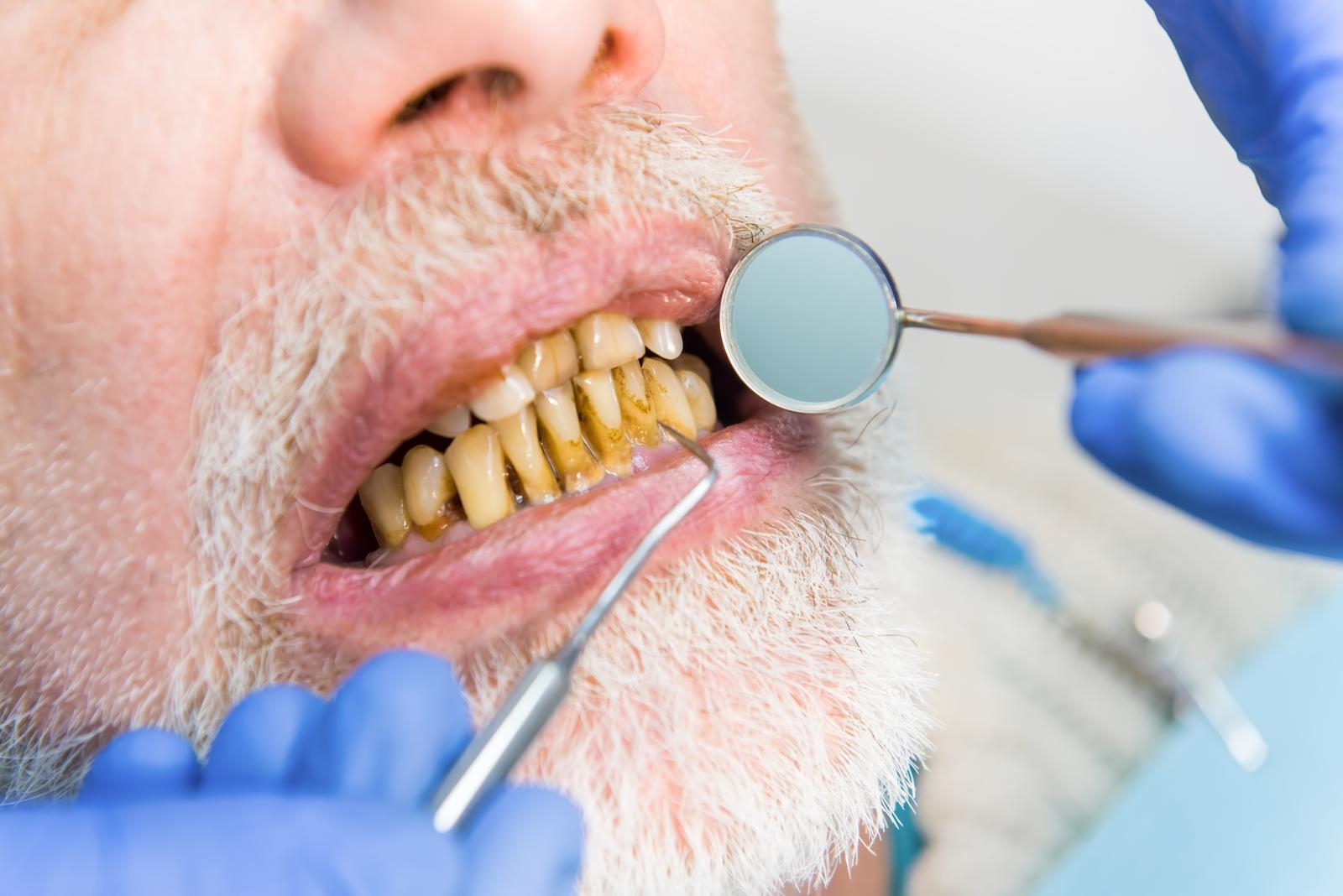Are you experiencing redness, swelling, or bleeding in your gums? Do you suffer from bad breath or loose teeth? If so, you may be at risk of gum disease. According to the American Dental Association, gum disease affects nearly half of all adults in the United States, making it a prevalent oral health issue.
The good news is that gum disease is preventable, and there are many steps you can take to maintain healthy gums. By implementing a daily oral hygiene routine, making healthy lifestyle choices, and seeking regular dental checkups, you can effectively prevent gum disease and keep your gums healthy for years to come. Keep reading to discover more tips on how to prevent gum disease and maintain optimal oral health!
Why Healthy Gums Matter
Your gums play a crucial role in maintaining good oral health. Healthy gums not only keep your teeth in place but also protect the supporting bones that keep your teeth in place. When your gums become infected, they can start to pull away from your teeth, forming pockets that allow bacteria to accumulate and destroy the bone and tissue that hold your teeth in place.
Gum disease has also been linked to several serious health conditions, including heart disease, stroke, and diabetes. Inflammation caused by gum disease may trigger an inflammatory response throughout your body, leading to these health problems. This makes maintaining healthy gums essential to your overall health and well-being.
Brushing and Flossing Properly
Brushing Techniques
Brush your teeth at least twice a day for two minutes each time, using a fluoride toothpaste. Using a soft-bristled toothbrush and gentle circular motions, brush all surfaces of your teeth – fronts, backs, and chewing surfaces. Don’t forget to brush your tongue to remove bacteria that can cause bad breath.
Flossing Techniques
Flossing helps to remove food particles and plaque from between your teeth and below the gum line, where your toothbrush cannot reach. Take about 18 inches of floss and wrap it around your index fingers on both hands, leaving about an inch of floss between them. Gently insert the floss between your teeth and scrape it along the sides, forming a C-shape around each tooth and making sure to go below the gum line.
By following these proper brushing and flossing techniques, you can prevent gum disease and maintain healthy gums. However, it’s also important to visit your dentist regularly for check-ups and cleanings to ensure optimal oral health.
Using Mouthwash Effectively
If you’re not using mouthwash, you’re missing out on some great benefits that can help prevent gum disease. Mouthwash is essential for a complete oral hygiene routine as it reaches those areas in your mouth where brushing and flossing can’t. Mouthwashes contain active ingredients that control and kill bacteria that cause plaque and bad breath. Using mouthwash in addition to brushing and flossing can significantly improve your gum health.
The Right Way to Use Mouthwash
While mouthwash can be very helpful in maintaining healthy gums, it’s important to use it effectively. After brushing and flossing, rinse your mouth with mouthwash for 30-60 seconds for best results.
Make sure to choose an alcohol-free mouthwash to avoid a burning feeling in your mouth. Additionally, avoid eating or drinking anything for at least 30 minutes after using mouthwash to maximize its effectiveness. Remember, mouthwash should not replace brushing and flossing, but rather complement your routine.
Choosing the Right Toothbrush
Choosing the right toothbrush is crucial in maintaining overall gum health. Consider investing in an electric toothbrush which is more effective in cleaning your teeth and gums. Electric toothbrushes have a timer that ensures you brush your teeth for at least 2 minutes, which is the recommended time. Furthermore, they have different speed settings that allow you to tailor your brushing to your needs.
When choosing a manual toothbrush, go for one with soft bristles. Hard bristles can damage your gums and lead to gum recession. Also, make sure the head of the toothbrush can reach all parts of your mouth.
Regardless of the type of toothbrush you choose, it’s essential to replace it every 3-4 months. Worn-out bristles can be ineffective in cleaning your teeth and gums, and can even harbor bacteria, which can lead to further complications.
Diet and Nutrition
Your diet and nutrition play a significant role in maintaining healthy gums. It is essential to consume a balanced diet rich in nutrients that can strengthen your teeth and gums. Foods that contain a high amount of vitamins and minerals like Vitamin C, Vitamin D, and Calcium can improve gum health and reduce the risk of gum disease. Try incorporating the following foods in your daily diet to maintain healthy gums:
| Food | Nutrient Content |
|---|---|
| Oranges, Kiwis, Strawberries, and Guava | Rich in Vitamin C which can help reduce inflammation and strengthen gums |
| Salmon, Tuna, and Sardines | Rich in Vitamin D which can help reduce gum inflammation and bone loss |
| Dairy Products (Milk, Yogurt, Cheese) | Rich in Calcium which can help protect the teeth and bones supporting the gums |
Additionally, avoid consuming too many sugary and acidic foods like candies, soda, and citrus fruits, as they can erode tooth enamel and cause gum inflammation.
Avoiding Tobacco Products
Smoking and tobacco products not only stain your teeth, but they can also harm your gums. Smokeless tobacco products like chewing tobacco can cause gum recession, which can lead to tooth loss. Smoking can weaken the immune system, making it harder for the body to fight off gum infections. It can also interfere with blood flow, reducing the amount of oxygen and nutrients that reach the gums, making it harder for them to heal.
If you are a smoker, one of the best things you can do for your gum health is to quit smoking. Seek support from friends, family, or a smoking cessation program to help you quit. Avoiding other tobacco products can also reduce your risk of developing gum disease.
Managing Stress Levels
Stress is a part of life, but it can also take a toll on your oral health. High-stress levels could lead to poor oral hygiene habits such as skipping regular brushing and flossing, which can contribute to gum disease. When you’re under stress, your body produces more cortisol, the hormone that weakens your immunity to infections including gum infections. It’s essential to manage your stress levels by incorporating stress-reducing techniques such as meditation, deep breathing exercises, and yoga.
Additionally, incorporating healthy habits such as regular exercise, getting adequate sleep, and eating a healthy and balanced diet can help keep your stress levels in check. If you feel overwhelmed and stressed, don’t hesitate to speak to your doctor or therapist to develop healthy coping mechanisms and stress management strategies.
Regular Dental Checkups
Regular dental checkups are crucial for maintaining healthy gums and teeth. During a dental exam, your dentist will examine your gums for any signs of gum disease and remove any plaque or tartar buildup that can cause gum inflammation. Your dentist can also detect any cavities or dental issues that could lead to gum problems.
Ask your dentist how often you should schedule regular checkups depending on your dental health. Generally, it’s recommended to have a dental exam every six months to maintain good oral health and prevent gum disease. It’s also essential to communicate with your dentist about any concerns or changes in your oral health between checkups to address them and prevent them from escalating into more significant issues.
Gum Disease Warning Signs
Your gums are an essential part of your overall oral health, and gum disease can lead to some serious issues if left untreated. Therefore, it’s important to know the warning signs of gum disease and how to identify them early. By recognizing these signs, you can take the necessary steps to stop it from progressing and maintain healthy gums for a lifetime.
Bleeding Gums:
Bleeding gums are one of the most common signs of gum disease. If your gums bleed when you brush or floss, it may be a sign of gingivitis or periodontitis. Inflammation caused by bacteria can weaken the gum tissue, causing it to bleed. Don’t ignore this sign, as gingivitis is reversible if caught early.
Receding Gums:
When your gums start to pull back from your teeth, it may be a sign of gum disease. Receding gums expose the sensitive roots of your teeth and can cause tooth sensitivity and decay. It’s essential to address the problem early, as the damage to your gums is irreversible.
Other signs of gum disease include bad breath, swollen or red gums, and loose teeth. If you notice any of these symptoms, make an appointment with your dentist as soon as possible. Early treatment can help prevent gum disease from progressing and causing serious dental problems.
Treating Gum Disease
There are two main types of gum disease: gingivitis and periodontitis. Gingivitis is the early stage of gum disease, while periodontitis is a severe form that can cause irreparable damage to your gums and teeth. Thankfully, both types of gum disease can be treated successfully with the right care and treatment.
Gingivitis:
The treatment for gingivitis typically involves regular professional cleanings, daily brushing, and flossing. Your dentist may also recommend an antiseptic mouthwash to help reduce the amount of plaque-causing bacteria in your mouth. If caught early enough, gingivitis can be reversed with proper oral hygiene and maintenance.
Periodontitis:
Periodontitis usually requires a more aggressive approach. Treatment may involve scaling and root planing procedures to clean the infected pockets around your teeth. In more severe cases, surgery may be necessary to remove damaged gum tissue or to graft healthy tissue in its place. Your dentist may also recommend antibiotics to help control the infection.
Prevention is key when it comes to gum disease. Make sure to brush and floss regularly, quit smoking, and see your dentist for routine checkups. If you do develop gum disease, don’t worry; there are plenty of treatment options available to get your gums back on track.
Oral Hygiene Habits for Children
As a parent, it is vital to teach your children good oral hygiene habits from an early age, ensuring they grow up with strong, healthy teeth and gums. Although baby teeth will eventually be replaced by adult teeth, we must still take care of them. Decay and gum disease can harm the permanent teeth waiting below the surface.
Regular Brushing
The American Dental Association recommends brushing our teeth twice a day for two minutes each time. Start teaching your child to brush their teeth as soon as their first tooth appears. Initially, they can use a smear of fluoride toothpaste the size of a grain of rice, eventually increasing to a pea-sized amount by age three. Encourage them to spend the entire two minutes brushing their teeth, ensuring they reach all areas of their mouth.
Healthy Diet
What we eat affects our dental health. Educate your child about the importance of a balanced diet consisting of protein, vegetables, fruits, whole grains, and dairy products. Candy, soda, and other sugary or acidic foods should only be an occasional treat.
Lastly, regular dental checkups are as important as good oral hygiene habits. Help your child feel comfortable by making it a positive, fun experience, promoting lifelong dental health.
Gum Health and Pregnancy
As an expectant mother, your body goes through significant changes, including hormonal fluctuations, which can impact your gum health.
Increased Risk of Gum Disease
Pregnant women are more susceptible to gum disease as hormonal changes make it easier for bacteria in plaque to grow. This, coupled with an increase in blood flow and gum sensitivity, can lead to red, swollen, and bleeding gums, typically occurring during the second or third trimester.
Precautions to Take
To maintain healthy gums during pregnancy, practice good oral hygiene habits. Brush twice a day for two minutes, floss once a day, and rinse with an antibacterial mouthwash.
Additionally, mention your pregnancy to your dentist during your appointment so that they can make any necessary accommodations. Dental x-rays are typically avoided during pregnancy but sometimes are necessary for treatment. Ensure that you are practicing good self-care, and contact your dentist if you have any concerns. A healthy pregnancy starts with a healthy mouth.
The Role of Genetics
Just like many other health conditions, genetics can also play a role in gum disease. While practicing good oral hygiene habits and maintaining healthy habits can reduce the risk of gum disease, some people may still be prone to developing gum disease due to their genetic makeup.
Research suggests that certain genetic variations can affect how your immune system responds to bacteria in your mouth and how your body deals with inflammation, which in turn puts you at a higher risk for gum disease. Therefore, if gum disease runs in your family, it’s important to take preventive measures to maintain healthy gums.
Other risk factors that can increase the risk of gum disease are also associated with genetics, such as systemic diseases that weaken the immune system and increase inflammation, which can lead to gum disease.
Best Practices for Healthy Gums
Now that you’re aware of the risk factors and preventative measures, it’s important to know the daily habits and practices that can help maintain healthy gums throughout your life:
| Best Practices | Description |
|---|---|
| Brushing twice a day | Brush your teeth for two minutes twice a day using a fluoride toothpaste. |
| Flossing daily | Floss between your teeth at least once a day to remove plaque and food particles from areas your toothbrush can’t reach. |
| Eating a healthy diet | Eat a well-balanced diet rich in fruits, vegetables, and whole grains while limiting sugary and acidic foods and drinks. |
| Not smoking or using tobacco products | Smoking and tobacco use can increase the risk of gum disease and other oral health problems. |
| Seeing your dentist regularly | Visit your dentist every six months for a regular check-up and professional cleaning to maintain good oral health. |
By following these best practices and adopting a healthy lifestyle, you can significantly reduce the risk of developing gum disease and enjoy healthy gums throughout your life.
Take Action to Keep Your Gums Healthy!
Congratulations! You’ve taken an important first step towards preventing gum disease and maintaining healthy gums. By brushing and flossing regularly, using mouthwash, and going to the dentist for regular cleanings and checkups, you’re already doing a lot to keep your teeth and gums in good shape. But don’t stop there!
Make sure you’re eating a healthy diet, avoiding tobacco, and reducing your sugar intake to further protect your gums. And if you notice any signs of gum disease – such as bleeding, inflammation, or gum recession – don’t wait to get treatment. By taking action now, you can protect your teeth and gums for years to come. Your smile (and your overall health) will thank you!






